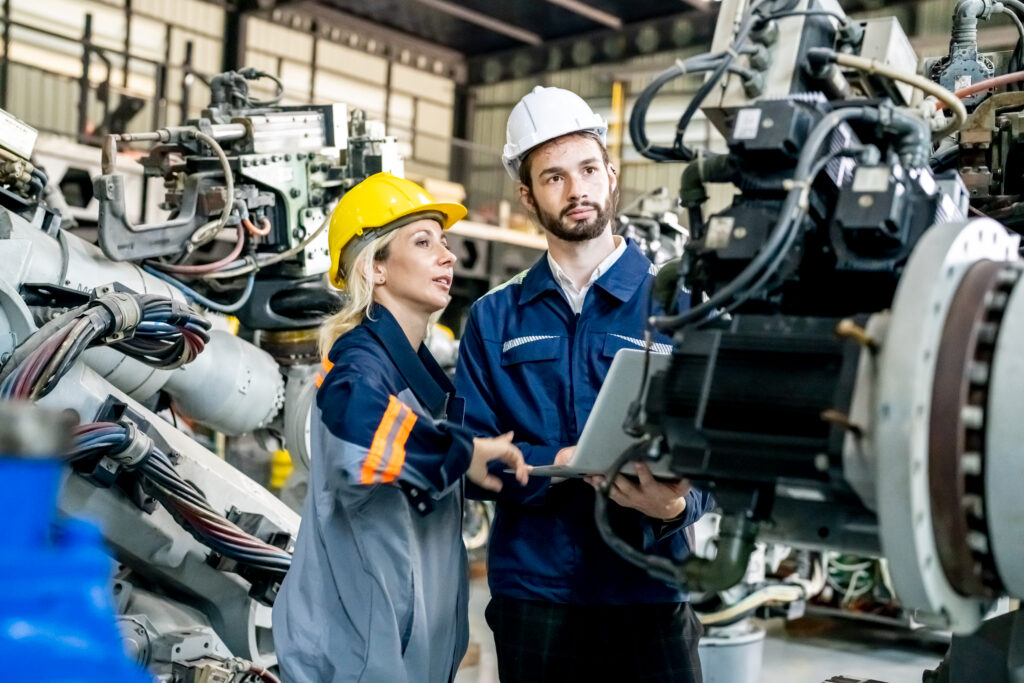
1. The Rise of Smart Manufacturing and Industry 4.0
Industry 4.0—the fourth industrial revolution—is already beginning to reshape the manufacturing landscape. This wave of innovation integrates smart technologies like the Internet of Things (IoT), Artificial Intelligence (AI), Big Data, and advanced robotics into manufacturing processes. Smart factories, equipped with sensors and connected devices, allow for real-time data collection, analysis, and decision-making. This connectivity ensures enhanced productivity, more precise control over production, and predictive maintenance, reducing downtime and boosting efficiency. As AI and machine learning continue to advance, U.S. manufacturers will be able to optimize every aspect of their operations, from supply chain management to final product delivery.
2. Automation and Robotics in Every Aspect of Production
Automation is no longer just about replacing repetitive tasks—it’s about enhancing productivity and quality. Robotics and automation systems are becoming more sophisticated, performing tasks that were once considered too complex for machines, such as precision assembly, quality control, and even product customization. With advancements in robotics, including collaborative robots (cobots) that work alongside human workers, manufacturers are improving both safety and efficiency. From automotive plants to food processing, automation is reducing labor costs and improving consistency while also addressing labor shortages in industries where skilled workers are hard to find. In the coming years, robotics will become an even more integral part of the manufacturing workforce.
3. Sustainability and Green Manufacturing
Sustainability is no longer a trend—it’s a necessity. U.S. manufacturers are increasingly turning their attention to reducing their environmental impact. From energy-efficient facilities to sustainable sourcing practices, green manufacturing is the future. Companies are investing in renewable energy sources like solar and wind power, adopting energy-efficient technologies, and using recycled or eco-friendly materials in their production processes. Waste reduction strategies, including recycling, upcycling, and zero-waste initiatives, are gaining traction as manufacturers strive to reduce their carbon footprints. Consumers are becoming more eco-conscious, demanding sustainable products, and manufacturers are answering the call by integrating sustainability into their operations. The future of U.S. manufacturing will be heavily influenced by how companies embrace and expand their green initiatives.
4. 3D Printing and Additive Manufacturing
Additive manufacturing, or 3D printing, is revolutionizing the way products are designed and produced. By creating objects layer by layer from digital blueprints, 3D printing allows for greater flexibility, faster prototyping, and more complex designs than traditional manufacturing methods. In industries such as aerospace, automotive, healthcare, and consumer goods, 3D printing is allowing for the production of customized parts, reducing waste, and lowering material costs. As the technology matures, it will become more cost-effective, enabling manufacturers to produce smaller batches of highly customized products while reducing supply chain dependencies. The potential of 3D printing will continue to grow, enabling more agile and adaptable production systems.
5. Reshoring and Supply Chain Resilience
The COVID-19 pandemic exposed the vulnerabilities in global supply chains, pushing many U.S. manufacturers to reconsider their offshoring strategies. Reshoring—the process of bringing manufacturing jobs and production back to the U.S.—is a trend that’s rapidly gaining momentum. U.S. manufacturers are increasingly looking to reduce their dependence on international supply chains, which can be vulnerable to disruptions. By reshoring production, companies can increase supply chain resilience, reduce lead times, and have greater control over quality and costs. At the same time, reshoring is creating new opportunities for domestic workers and fostering innovation in manufacturing processes. The future of U.S. manufacturing will likely include a rebalanced approach to global sourcing and a renewed focus on domestic production.
6. The Workforce Transformation: Upskilling and New Skillsets
As manufacturing becomes more technologically advanced, the workforce must evolve alongside it. The future of U.S. manufacturing relies on a highly skilled workforce capable of operating and maintaining sophisticated automation, robotics, and AI systems. To meet this demand, manufacturers are investing heavily in workforce development, offering upskilling programs, certifications, and partnerships with educational institutions. The jobs of the future won’t just require traditional manufacturing skills—they will also require knowledge of advanced technologies, data analytics, and problem-solving. Manufacturers that invest in their workforce will have a competitive edge, ensuring they have the talent to innovate and lead in a rapidly changing environment.
7. Digital Twins and Predictive Analytics
Digital twins—virtual replicas of physical systems—are gaining traction in U.S. manufacturing as part of the broader trend toward digitalization. These digital models can simulate and predict real-world processes, enabling manufacturers to optimize operations and prevent potential issues before they arise. Predictive analytics, powered by AI and big data, allow manufacturers to anticipate equipment failures, supply chain disruptions, and demand fluctuations. By using these technologies, manufacturers can operate more efficiently, reduce waste, and create products that meet the exact specifications of customers, all while minimizing downtime and improving safety. The integration of digital twins and predictive analytics will be critical to the next generation of smart manufacturing.
The future of U.S. manufacturing is bright, driven by innovation, sustainability, and advanced technology. From the rise of smart manufacturing and automation to the focus on sustainability and reshoring, these trends are redefining how products are made, delivered, and consumed. For manufacturers, staying ahead of these changes will not only improve efficiency and reduce costs but will also position them to meet the growing demands of consumers and the global marketplace. Embracing these trends today will help U.S. manufacturers build a more resilient, competitive, and sustainable future.





